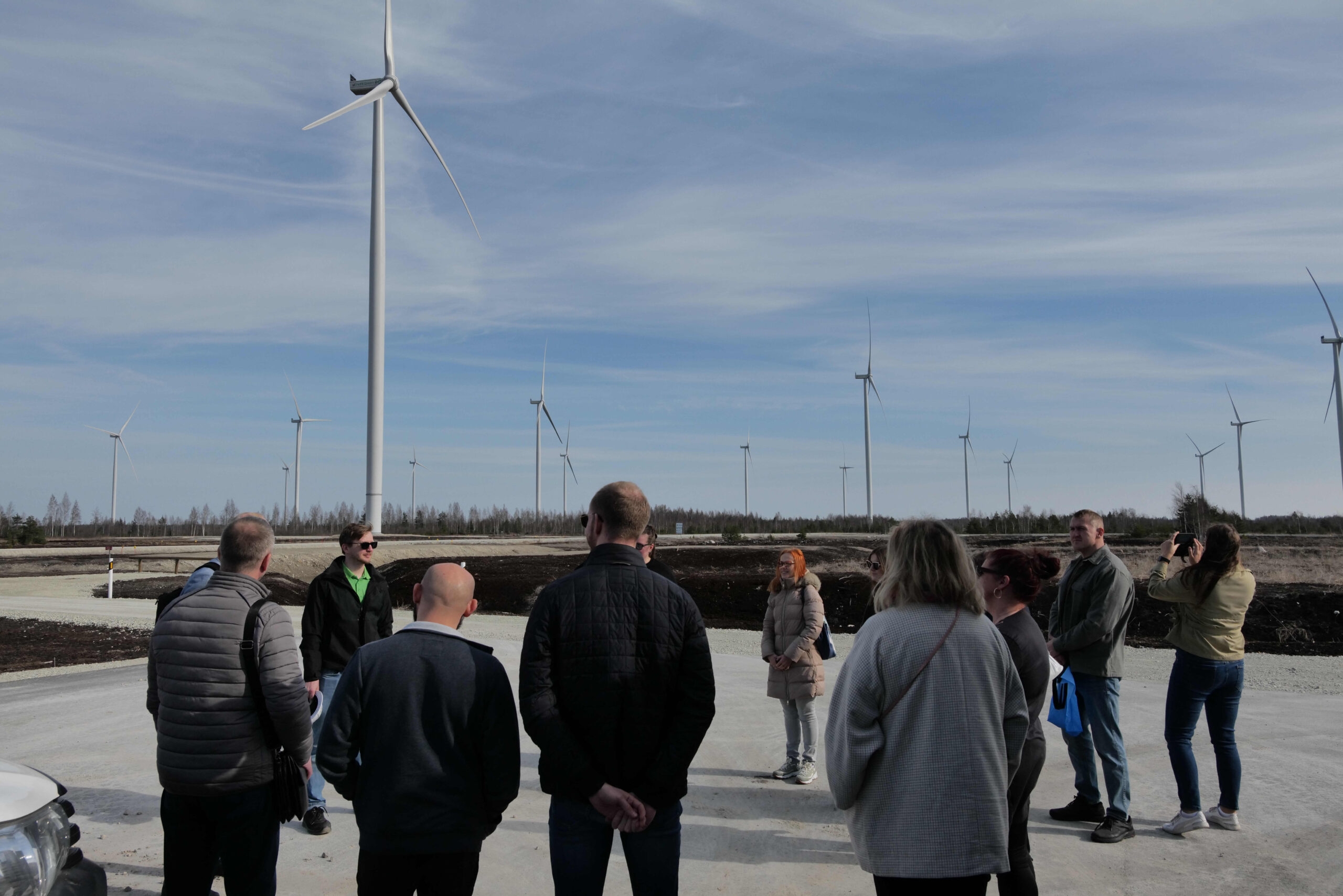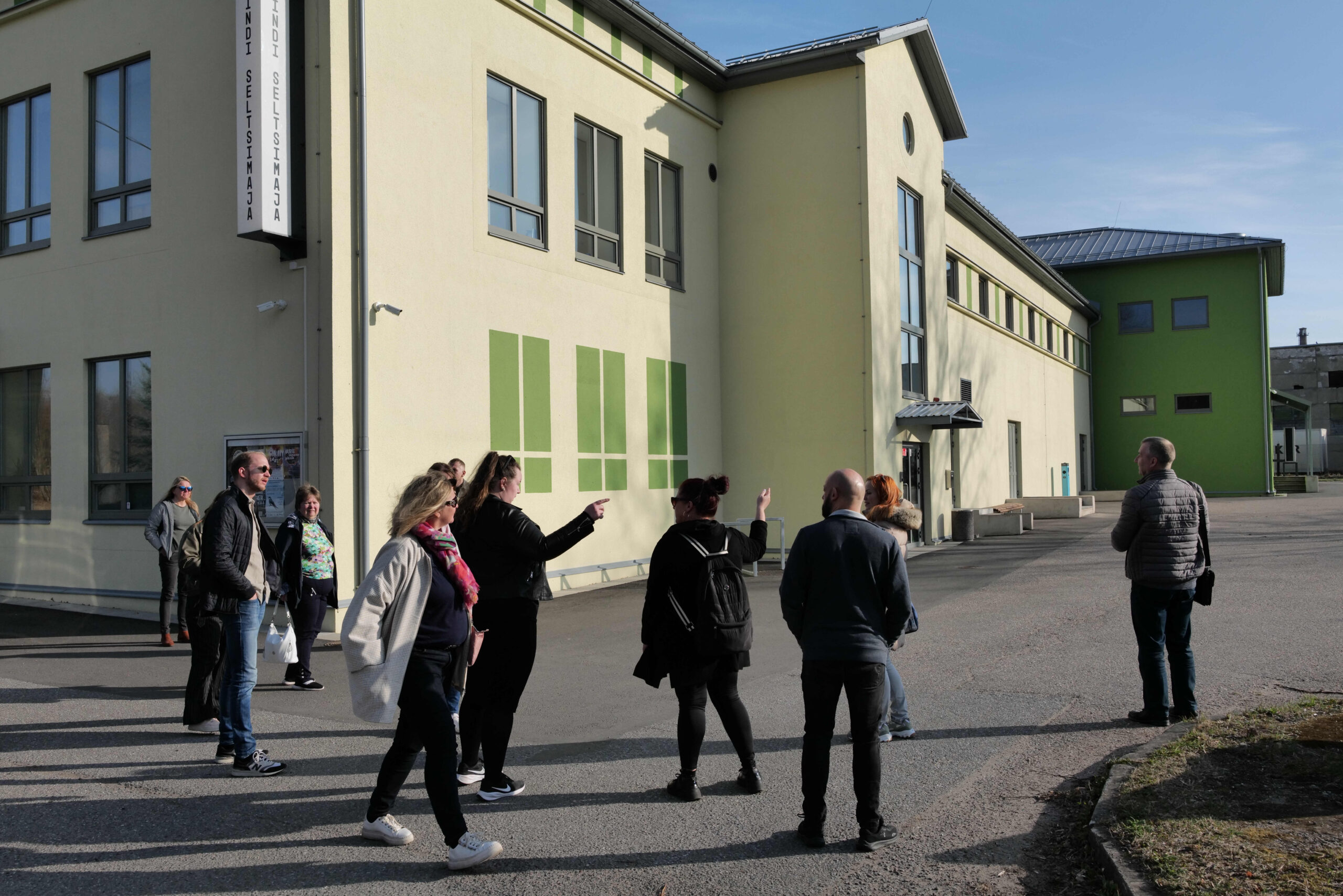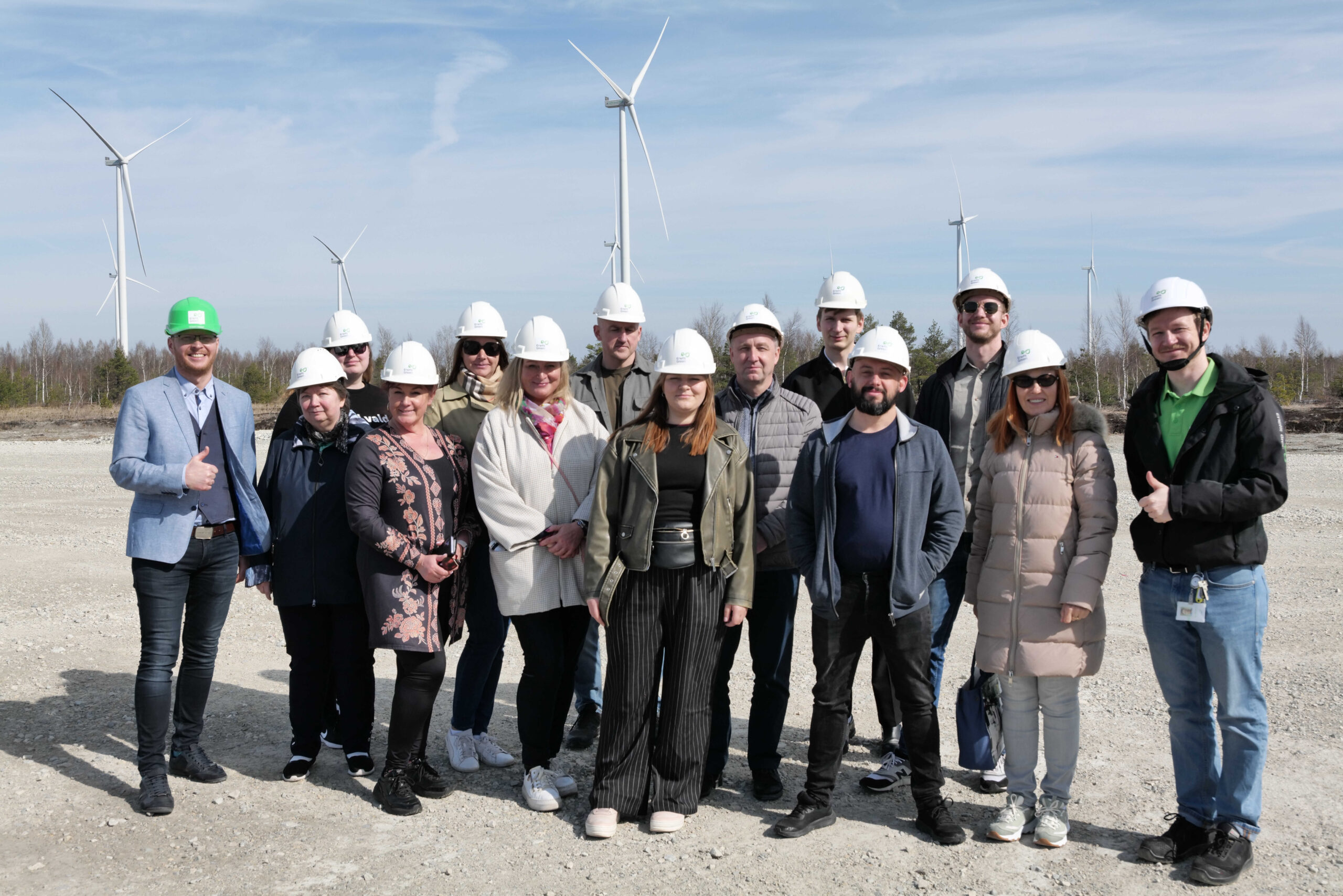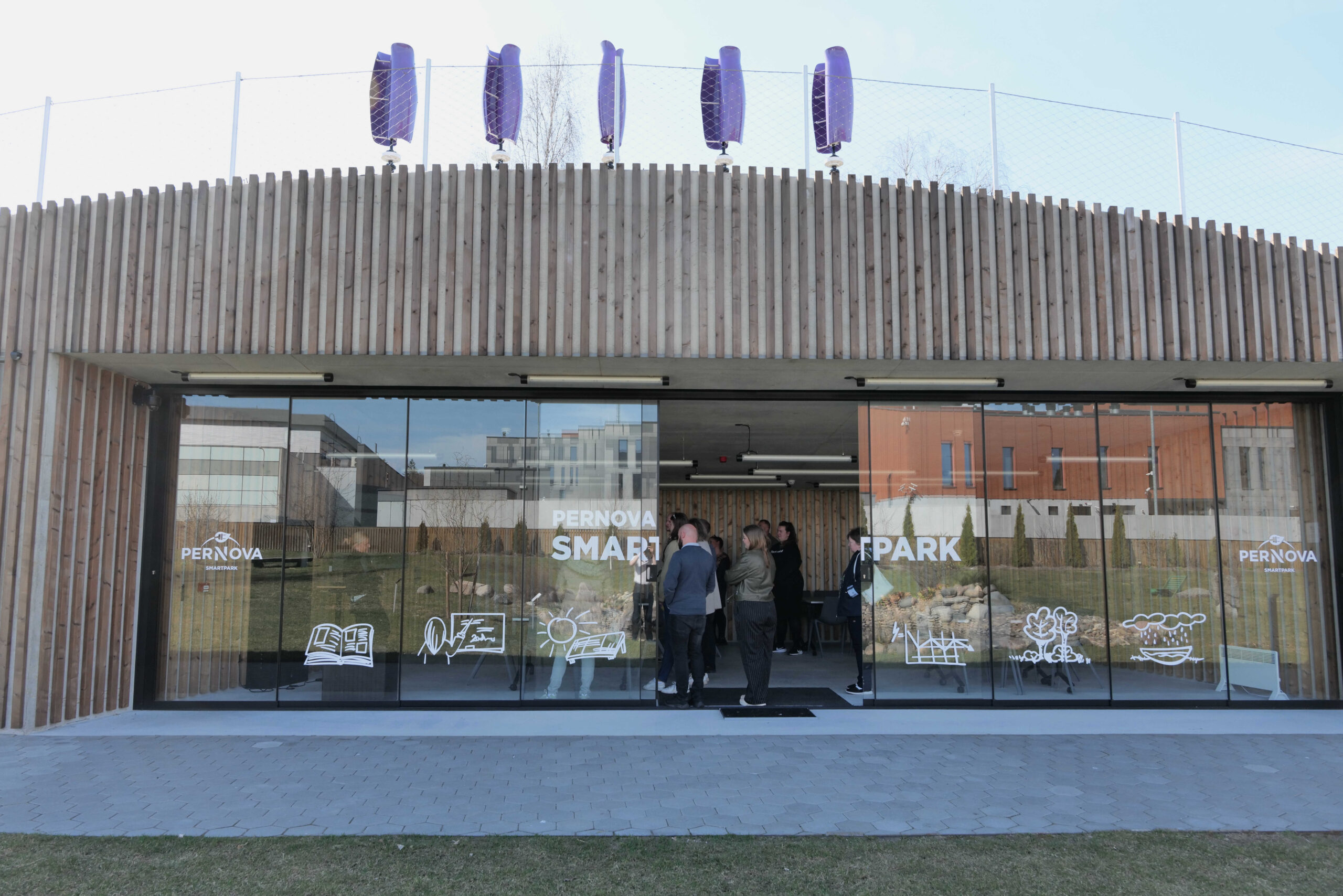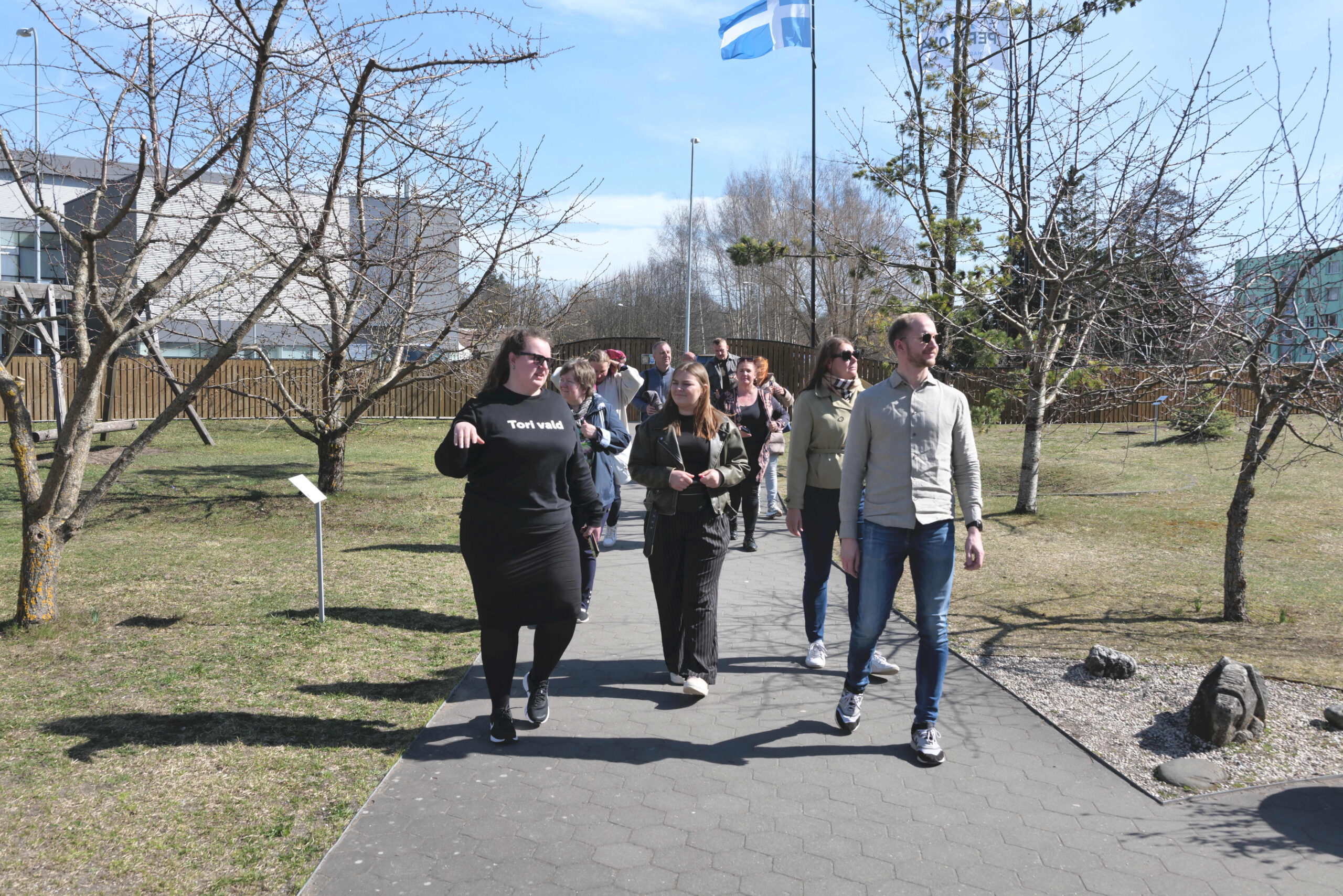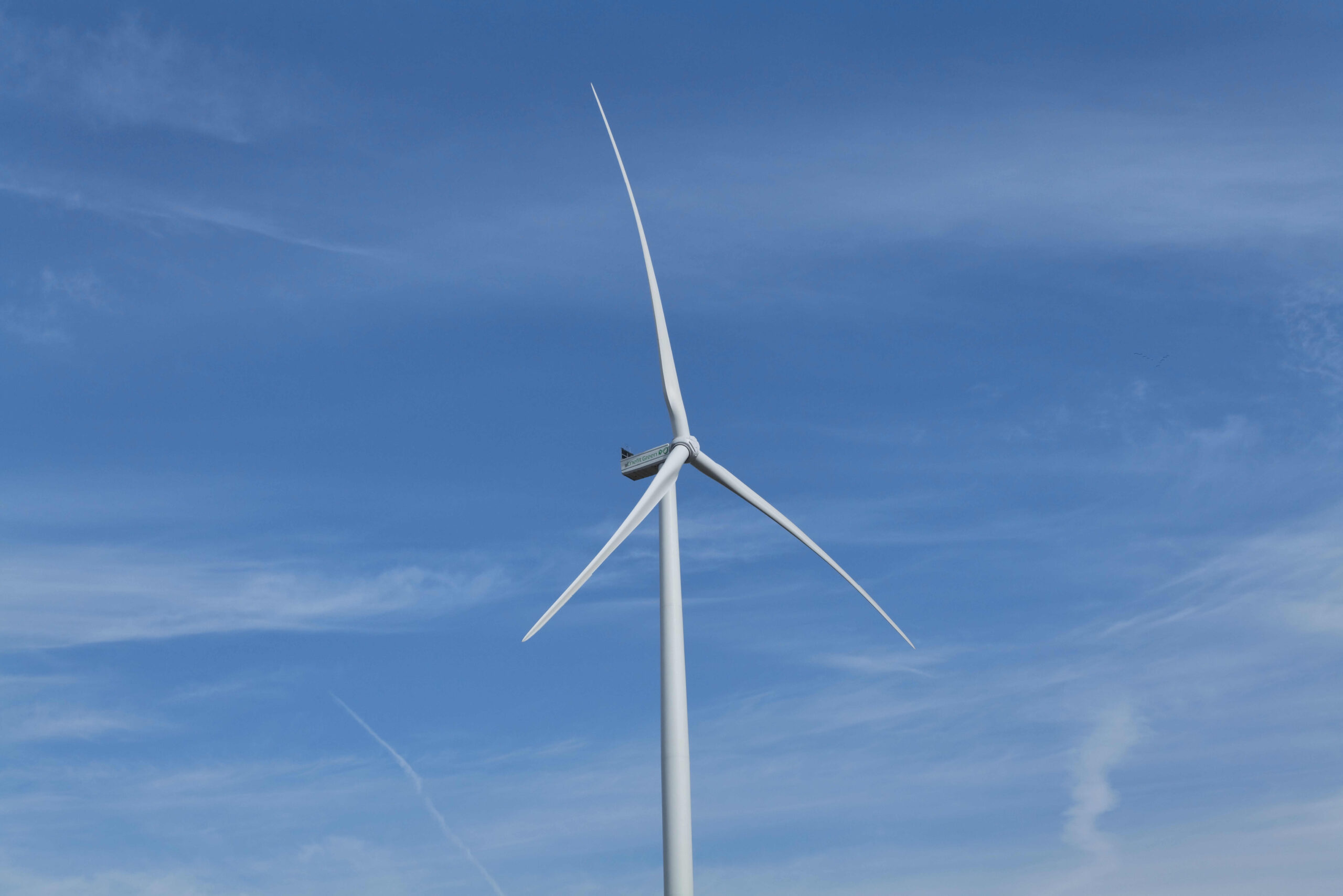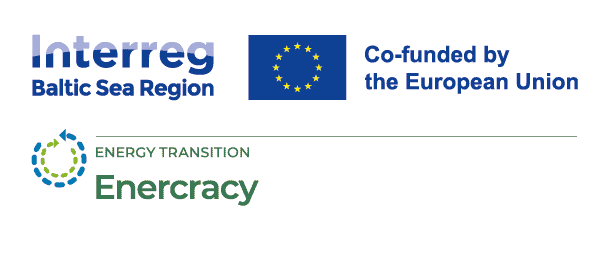
Example in action: visiting Tori Municipality and Pärnu County
29 April 2025
Tori municipality in action
The site visit started with the presentation of activities performed by the Tori municipality in Sindi, the largest and only settlement in the municipality, in its recently renovated cultural centre with significantly improved energy efficiency and installed solar panels. As many of the buildings in the municipality have a heritage status, the municipality actively seeks to improve energy performance while preserving the architectural features. This work culminated in Sindi’s wooden apartment building renovation project, which improved the energy label from H to B, for which the municipality won an annual heritage conservation award. Similarly, the Tori municipality is currently working on renovating the Sindi town hall. As a municipality, Tori seeks to find a middle ground between preserving heritage and renewable energy and energy-efficient development.
Outside of the area of heritage preservation, the Tori municipality works in many different domains of energy efficiency improvements. Many municipal buildings, including kindergartens, schools, and social work centres, have been renovated, and solar panels have been installed. As a growing municipality, additional possibilities have been created to develop new municipal buildings, where the principles of climate resilience, adaptation, and climate impact mitigation are even stronger. The municipality also takes a similar approach in terms of permitting new buildings. However, this is not limited to buildings – Tori municipality actively monitors different aspects of its energy consumption. For instance, between 2019 and 2024, the municipality decreased the street lighting energy consumption by 292.14 MWh (35.80%) due to the updates of lighting systems and continuous monitoring of its use.
Furthermore, the existing aims of the municipality target active resident engagement in environmental protection. The Tori municipality provided educational community-oriented courses on biodiversity preservation, nature-based solutions, and household-level actions for effective environmental and climate impact mitigation to empower local populations. Similarly, a series of biodiversity flower meadows were developed throughout the municipality to engage the local community. The work on biodiversity improvement culminated in the redevelopment of the water area of a demolished dam into rapids with integrated nature-based solutions in the green riverside.
Cooperation for the better future
After visiting Sindi Cultural House, the Enercracy project consortium went north to the neighbouring Põhja-Pärnumaa municipality to the Sopi-Tootsi hybrid park to see the biggest hybrid park in the Baltics. The park is estimated to produce 750 GWh of green power annually. During his presentation, Innar Kaasik, a member of the Management Board and Chief Operating Officer at Enefit Green, described the pathways of developing the hybrid park and related community engagement.
For the local community to directly benefit from the significant energy project, community benefits were created to facilitate stronger acceptance of the proposed solutions. A new local road is currently being developed through the hybrid park to shorten the route from the local communities toward Tallinn by over ten kilometres. Furthermore, all the owners of residential buildings within two kilometres of the wind turbine receive additional payments and the municipality itself. Furthermore, the possibility of a direct line to the energy consumer was developed to promote local entrepreneurship. Finally, Enefit Green has cooperated with different vocational schools in Pärnu and Kuressaare to meet the labour demand of Estonia’s wind energy sector. The developed incentive structures, community engagement, and workgroup activities have created a stronger connection between the different stakeholder groups and aligned large-scale developer interests and community needs. The framework can further work as a model for working with the community and community representatives, such as municipalities, to create a large-scale energy project to benefit all.
Climate-focused education
On the way back to Pärnu, the Enercracy project visited Pernova Hariduskeskus, a phenomenal example of a community educational centre, which applies and tests innovative building, energy, and infrastructure solutions. The educational centre is situated in a densely populated part of Pärnu. Because of this, the green area developed around the educational centre acts as the primary park area for surrounding residents. Many of the benches in the area are equipped with charging stations that utilise only the solar energy generated from their rooftops. In the past year, the educational centre has developed an outdoor seminar venue operated fully by the horizontal wind turbines on its roof. The interactions with the representatives of the educational centre revealed that even as technically they represent an educational centre, they perceive their role much larger than this – they see themselves as the testing ground for the newest technologies in energy, being an example of what is achievable.
Conclusion: It is time to become a model for replication!
A common thread appeared between the different examples of initiatives during the study visit. In every instance, the facilitators of local green transition stressed the willingness to be an example and achieve the greater good with their actions for the community. Thus, creating underlying conditions to participate and feel a sense of responsibility towards the people around you is important in facilitating community-centred local energy transition. Feel free to share your stories and examples of initiatives and people driving the local energy climate transition!
